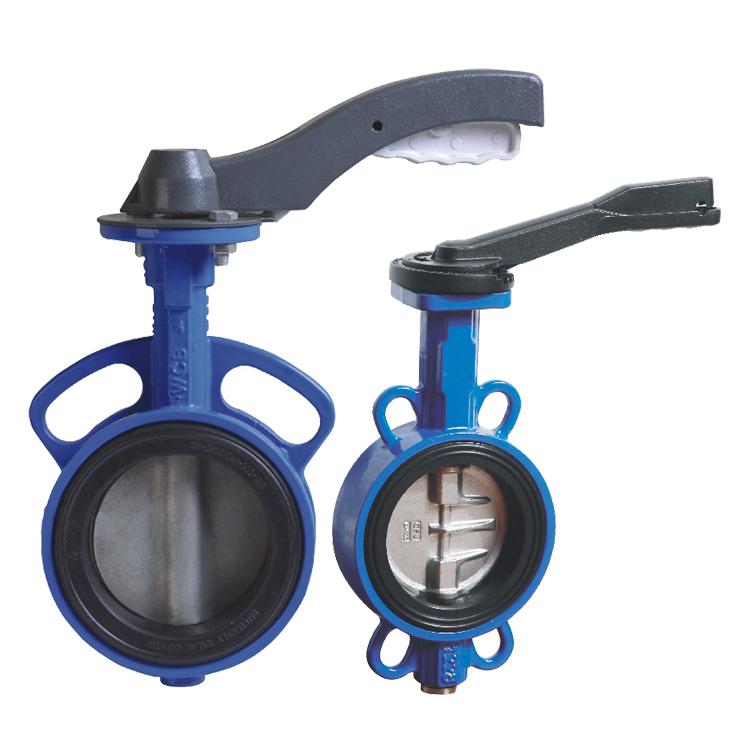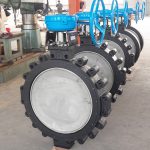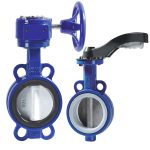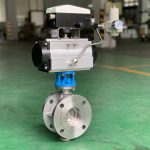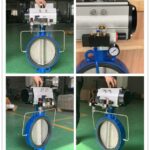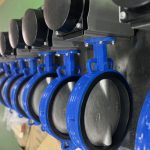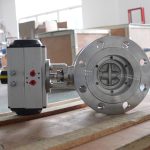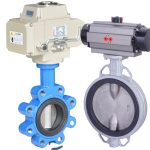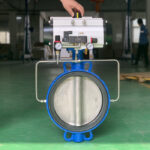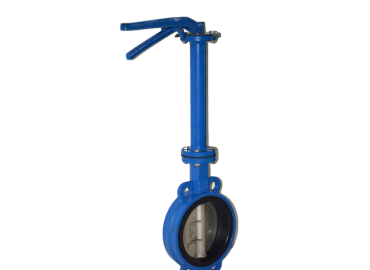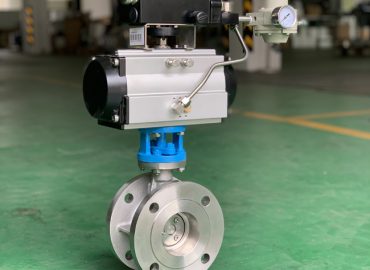Welcome to our comprehensive guide on wafer style butterfly valves, a crucial component in many industrial applications. In this blog post, we’ll delve deep into the world of these unique devices, exploring their function, design, and wide-ranging applications. Whether you’re an industry professional, a student of engineering, or simply curious about the mechanics that underpin our modern world, understanding how wafer style butterfly valves work is both fascinating and useful. So, let’s embark on this journey to unravel the intricacies of these innovative devices that play a pivotal role in controlling the flow of liquids in numerous sectors.
Introduction
In this comprehensive guide to wafer style butterfly valves, we will delve into the intricate details of their design, function, and multitude of applications. Butterfly valves, in general, are pivotal in controlling and modulating the flow of fluids in various industrial sectors. Among them, wafer style butterfly valves, characterized by their compact and cost-effective design, have carved a unique niche. They stand out due to their disc that pivots on a central axis, regulating flow with minimal obstruction and pressure drop. The name “wafer” comes from the valve’s design, which is sandwiched between flanges on the pipes it connects, much like a wafer in a wafer-style cookie. This design allows for a lightweight construction that is both easy to install and efficient in operation. These qualities make wafer style butterfly valves an attractive option for numerous applications, from wastewater treatment plants to oil and gas industries, chemical processing units, and even HVAC systems. Understanding the mechanisms behind these valves is not only fascinating but also crucial for professionals working in sectors where fluid control is paramount.
Brief explanation about the purpose of the blog post.
The aim of this blog post is to provide an in-depth understanding of wafer butterfly valve, a critical component used in various industries to control the flow of fluids. We will be exploring their unique design, how they function, and the numerous applications they serve. The objective is to educate industry professionals, engineering students, or anyone interested in learning more about these essential devices. By the end of this post, you should have a comprehensive understanding of wafer style butterfly valves, equipping you with the knowledge to make informed decisions, whether you’re involved in their purchase, installation, or maintenance, or simply wish to broaden your understanding of industrial mechanisms.
Quick introduction to wafer style butterfly valves.
Wafer type butterfly valve are a type of quarter-turn valve that regulate the flow of a fluid, typically in large pipelines. They are named for their distinct design, where a disc is mounted on a rotating shaft. When the valve is closed, the disc is turned so that it completely blocks off the path. When the valve is open, the disc is rotated a quarter turn so that it allows unrestricted passage of the fluid. The disc is always present within the flow, therefore a pressure drop is always induced in the flow, regardless of the valve position. These valves are widely used due to their simplicity, reliability, and low cost. They are typically employed in applications where a constant pressure drop is not an issue, and throttling is required.
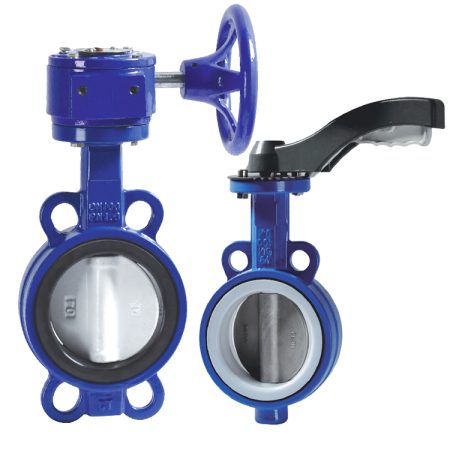
What is a Wafer Style Butterfly Valve?
A wafer style butterfly valve, one of the three designs of butterfly valves, is a critical device used to regulate and isolate the flow of a fluid in various industrial applications. It gets its name from its unique design, which resembles a wafer or thin slice. This type of valve consists of a circular disc or plate with its pivot axes at right angles to the direction of flow in the pipe, which, when rotated, controls the flow of the fluid. When the disc is turned such that it aligns with the flow of fluid, the valve is in the open position and allows passage. Conversely, when the disc is rotated by ninety degrees such that it is perpendicular to the flow, the valve is in the closed position, blocking the fluid flow. The design of the wafer style butterfly valve allows it to be sandwiched between two flanges of a pipe, bolted in place, making it compact and easier to install compared to other valve types. These characteristics make the wafer style butterfly valve a popular choice in industries where space and weight considerations are crucial. Furthermore, their cost-effectiveness and efficiency in controlling flow make them an indispensable component in many sectors, including water distribution, chemical processing, and power generation.
Detailed definition of a wafer style butterfly valve.
A wafer style butterfly valve is a type of flow control device that is used to regulate or isolate the flow of a fluid in a system. This valve gets its name from its unique design that resembles a wafer or thin slice. It consists of a disc mounted on a rotating shaft. When the valve is closed, the disc is turned to block the flow of fluid. Conversely, when the valve is open, the disc is rotated to allow the fluid to pass through. The key feature of a wafer style butterfly valve is that it is designed to be sandwiched between two pipe flanges without the need for additional bolts or screws. This makes it a compact and cost-effective solution for controlling fluid flow, particularly in large pipe systems where space may be limited. The wafer style butterfly valve is widely used in various industries, including water treatment, oil and gas, and chemical processing.
Explanation of how it differs from other types of valves.
Wafer style butterfly valves differentiate themselves from other types of valves in several key ways. Unlike gate or globe valves, which control flow by moving a disc or plug against the flow of the fluid, butterfly valves use a rotating disc that pivots within the flow, causing less disruption and pressure drop. This also allows for quicker operation, as the disc only needs to be rotated a quarter turn to fully open or close the valve. Additionally, the design of wafer style butterfly valves is much more compact than other valve types. The wafer valve is installed between two pipe flanges, eliminating the need for extra space or additional support structures. This makes them ideal for systems where space is at a premium. Furthermore, the wafer design is generally lighter and less expensive than other valve styles, such as lug or flanged butterfly valves, making them a cost-effective choice for many applications. However, it’s worth noting that while wafer style butterfly valves offer many advantages, they are not suitable for all scenarios, particularly where removal of the downstream piping is required.
The Function of Wafer Style Butterfly Valves
Wafer style butterfly valves serve a crucial role in the control and regulation of fluid flow in a myriad of industrial applications. Their primary function is to modulate or completely shut off the flow of a fluid, be it liquid or gas, in a pipeline. The operation of the wafer style butterfly valve is simple yet effective. A circular disc, mounted on a rotating shaft within the valve body, pivots to control the flow. When the disc aligns with the direction of the fluid flow, the valve is in the open position, allowing unrestricted passage of the fluid. Conversely, when the disc is rotated 90 degrees to sit perpendicular to the fluid flow, the valve is in the closed position, blocking the flow entirely. This functionality allows for both on/off service and throttling service. In addition to controlling flow, these valves can also be used in systems where a tight seal is required to prevent backflow when the valve is in the closed position. Given their compact design and lightweight nature, wafer style butterfly valves are easy to install and require less support structure than other valve types, making them a popular choice in industries such as water treatment, HVAC systems, power plants, and chemical processing facilities. Their durability and cost-effectiveness further enhance their appeal, solidifying their position as a critical component in fluid management systems.
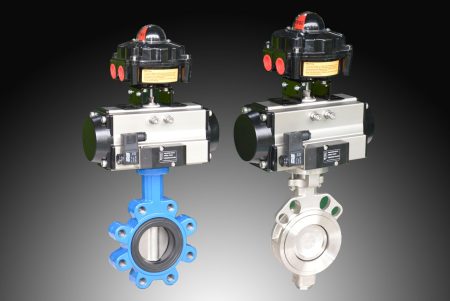
Description of what wafer style butterfly valves do.
Wafer style butterfly valves play a critical role in regulating the flow of fluids within pipelines across numerous industries. Their primary function is to either allow, restrict, or completely stop the flow of a liquid or gas. This is achieved through a rotating disc that’s positioned in the center of the pipe. When the disc is aligned parallel to the fluid flow, the valve is considered open and fluid can pass through freely. Conversely, when the disc is rotated 90 degrees and is perpendicular to the direction of the fluid flow, the valve is considered closed, effectively blocking the passage of fluid. Because of their design, wafer style butterfly valves are particularly useful in systems where space is limited, as they are compact and do not require additional support. They’re commonly used in water distribution systems, chemical processing plants, and HVAC systems due to their efficiency and cost-effectiveness.
Explanation of how they control flow in a pipeline.
Wafer style butterfly valves control the flow of fluid in a pipeline through the operation of a disc, which is centrally mounted on a rotating shaft. The rotation of this disc is what allows for the regulation of fluid flow. When the disc is rotated to align with the direction of the fluid flow – essentially lying flat – the valve is in the open position and allows the fluid to pass through unrestricted. However, when the disc is rotated 90 degrees to stand perpendicular to the direction of the fluid flow, the valve is in the closed position, thereby blocking the passage and stopping the flow completely. In addition to these fully open or fully closed positions, the disc can also be positioned at any angle in between, allowing for precise control over the rate of fluid flow, a technique often referred to as throttling. This flexibility in flow control makes wafer style butterfly valves an efficient and versatile choice for managing fluid flow in numerous industrial applications.
The role of the disc in the function of the valve.
The disc in a valve plays a crucial role in controlling and managing the flow of fluid within a pipeline. This circular or semi-circular component is mounted on a rotating shaft, allowing it to pivot within the body of the valve. The position of the disc determines whether the valve is open, partially open, or closed. When the disc aligns with the direction of the fluid flow, it lies flat and the valve is fully open, allowing fluid to pass through without restriction. Conversely, when the disc is rotated 90 degrees so that it is perpendicular to the fluid flow, the valve is fully closed, effectively blocking the flow of fluid. The disc can also be positioned at various angles in between to partially restrict the flow, providing precise control over the rate of fluid flow. This ability to regulate flow makes the disc an integral part of the valve’s functionality, contributing significantly to its efficiency and versatility in numerous industrial applications.
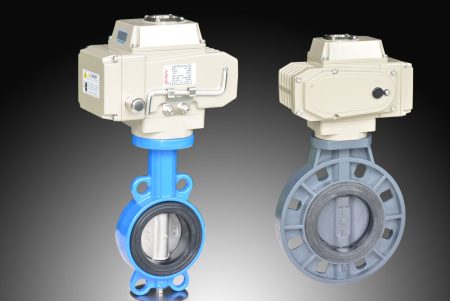
The Design of Wafer Style Butterfly Valves
The design of wafer style butterfly valves is both simple and ingenious, allowing for efficient control of fluid flow in a variety of industrial applications. These valves primarily consist of a circular disc or plate, a rod, and a sealing arrangement, all housed within a compact body that fits between two flanges in a pipeline system. The disc, which is the key component in controlling flow, is centrally mounted on the rod and can be rotated 90 degrees from fully open to fully closed positions. When the disc is parallel to the fluid flow, the valve is fully open, allowing maximum flow. Conversely, when the disc is perpendicular to the direction of the flow, it obstructs the passage, resulting in the valve being fully closed. The ability to position the disc at any angle between these two extremes enables fine-tuned control of the fluid flow rate. The sealing arrangement ensures that there is no leakage when the valve is in the closed position. One of the standout features of the wafer style butterfly valve design is its compact size, which makes it an excellent choice for systems where space is at a premium. Despite their small size, these valves are robust, durable, and can handle high-pressure environments, making them suitable for a wide range of applications, from water treatment facilities to chemical plants. Finally, their simple design also allows for easy installation and maintenance, contributing to their overall cost-effectiveness.
Overview of the design elements of a wafer style butterfly valve.
A wafer style electric butterfly valve is a unique and ingeniously designed device used for regulating or isolating fluid flow. Its design elements include a disc, a rod, a body, and a seal. The disc, which is the main component, is centrally mounted on the rod and can be rotated from a fully open to a fully closed position, effectively controlling the flow of fluid. When the disc is parallel to the fluid flow, the valve is in the open position, allowing maximum passage. Conversely, when the disc is perpendicular to the flow, the valve is in the closed position, blocking the fluid flow. The ability to adjust the disc at any angle between these two extremes allows for precise control of the fluid flow rate. The body of the wafer style butterfly valve is compact, fitting snugly between two flanges in the pipeline. This compact design makes it ideal for systems where space is a premium. The seal ensures that there is no leakage when the valve is in its closed position. These valves are robust, durable, and capable of operating under high pressure. Despite their simple structure, they offer easy installation and maintenance, making them cost-effective and efficient for a variety of industrial applications.
Explanation of the wafer design and how it contributes to the valve’s functionality.
Wafer design is a key element in certain types of valves, notably butterfly and check valves, contributing significantly to their functionality. The term ‘wafer’ in this context refers to the compact, thin profile of the valve, which allows it to be sandwiched between two flanges in a piping system. This design makes the valve extremely space-efficient, ideal for systems where space is at a premium. But the wafer design does more than just save space. In a wafer butterfly valve, for example, the disc – the component that opens and closes to control fluid flow – rotates within the wafer body. The slim design allows for quick and easy operation of the valve, with minimal resistance to the fluid flow when the valve is fully open. In a wafer check valve, the wafer design contributes to preventing backflow in a piping system. The valve opens when the fluid pressure on one side exceeds that on the other, allowing flow in one direction only. When the pressure equalizes or reverses, the valve closes, effectively preventing any backflow. Thus, the wafer design plays a critical role in enhancing the efficiency and functionality of these valves.
Discussion on the materials used in the manufacturing of these valves.
The materials used in the manufacturing of valves play a critical role in determining their durability, performance, and suitability for specific applications. Typically, these materials need to be robust, corrosion-resistant, and able to withstand various pressures and temperatures. Commonly used materials include various types of metal, plastic, and sometimes ceramic. Stainless steel is often used for its strength, durability, and resistance to corrosion and high temperatures, making it suitable for a wide range of industrial applications. Cast iron and ductile iron are also frequently used for their excellent strength-to-weight ratios and cost-effectiveness. For more corrosive environments or for handling certain aggressive fluids, materials like bronze, brass, and certain types of plastic such as PVC or PTFE (Teflon) might be used. Ceramic materials, known for their hardness and resistance to wear, can be used in high-wear applications. The choice of material also depends on the specific type of valve – for example, butterfly valves often feature a rubber or elastomeric seat for effective sealing. Ultimately, the material selection for a valve is determined by factors such as the nature of the fluid being handled, the operating pressure and temperature, and the required durability and lifespan of the valve.
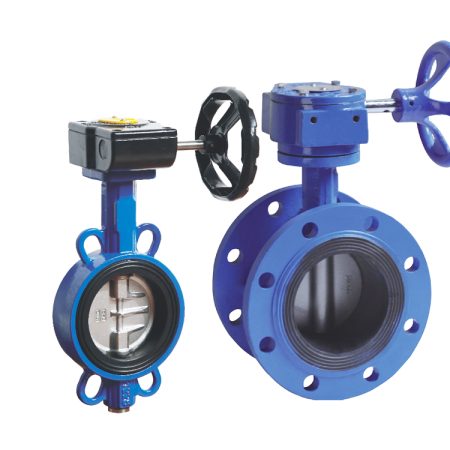
Applications of Wafer Style Butterfly Valves
Wafer style butterfly valves are widely used across a range of industries due to their compact design, cost-effectiveness, and reliable performance. One of the most common applications is in water distribution systems, where these valves are used for isolating sections of the system for maintenance or in case of a leak. They are also frequently used in wastewater treatment plants, where they control the flow of water and sludge through various stages of the treatment process. In the oil and gas industry, wafer butterfly valves are used in pipelines to control the flow of oil and gas, and in refineries, they manage the flow of various chemicals and processes. The food and beverage industry uses these valves in their processing systems, as they are easy to clean and can handle viscous fluids. Additionally, they are used in HVAC systems to control the flow of hot and cold air. In the power generation sector, these valves are used to control the flow of steam in turbines. Their ability to handle high pressures and temperatures also makes them suitable for use in fire protection systems. Despite their simplicity, wafer style butterfly valves are versatile and adaptable, making them an essential component in many different industrial processes.
Description of where wafer style butterfly valves are typically used.
Wafer style pneumatic butterfly valve are typically used in a variety of industries due to their compact design, efficient operation, and versatility. They are commonly found in water treatment plants where they regulate the flow of water during various stages of purification. In the oil and gas industry, these valves are used within pipelines to control the flow of petroleum and natural gas products. They are also prevalent in the chemical industry for managing the movement of various corrosive fluids, gases and semi-liquids. The food and beverage industry uses wafer style butterfly valves in processing systems due to their ability to handle a wide range of viscosities and ease of cleaning. They are also utilized in HVAC systems for controlling air flow and in fire protection systems due to their quick-acting nature. Additionally, in power plants, these valves are used to manage steam flow in turbines. Their compact size makes them ideal for applications where space is limited, and their simple design allows for easy maintenance and reliable performance.
Discussion of industry-specific applications.
Industry-specific applications of valves, particularly wafer style butterfly valves, are varied and diverse due to their versatility and efficiency. In the water and wastewater treatment industry, these valves control and isolate the flow of water and other liquids during various stages of treatment and purification. The pharmaceutical industry employs them in their processing systems for precise control of liquid flow rates, ensuring consistency and quality in drug production. In the food and beverage industry, these valves are crucial for managing the flow of various products, from liquids like milk and juice to semi-solids like yogurt and ice cream, due to their ability to handle different viscosities and easy cleanability. The oil and gas industry uses wafer style butterfly valves in pipelines for controlling the flow of petroleum and natural gas, and in refineries for managing the movement of various chemicals during processing. Power plants utilize these valves to regulate steam flow in turbines, contributing to efficient energy production. Even in HVAC systems, these valves play a vital role in controlling the flow of hot and cold air, maintaining optimal indoor temperatures. Thus, industry-specific applications of wafer style butterfly valves are extensive, underlining their essential role in various sectors.
Explanation of how the use of these valves can vary depending on the material flowing through the pipeline.
The use of valves, particularly wafer style butterfly valves, can greatly vary depending on the type of material flowing through the pipeline. For instance, when dealing with water or other non-corrosive liquids, standard materials such as stainless steel or cast iron are typically sufficient for the valve construction. However, when the pipeline carries corrosive or abrasive substances like certain chemicals or slurries, more resistant materials like PVC, bronze, or even ceramic may be necessary to prevent wear and tear on the valve. Similarly, for high-temperature applications such as steam lines, valves made from heat-resistant materials are essential. In the food and beverage industry, where hygiene is critical, valves often need to be made from food-grade materials and designed in such a way that they can be easily and thoroughly cleaned to prevent contamination. When gases are being transported, it’s important that the valve provides a tight seal to prevent leaks. Therefore, the choice and use of a valve are not only determined by its design and operation but also significantly influenced by the nature of the material flowing through the pipeline.
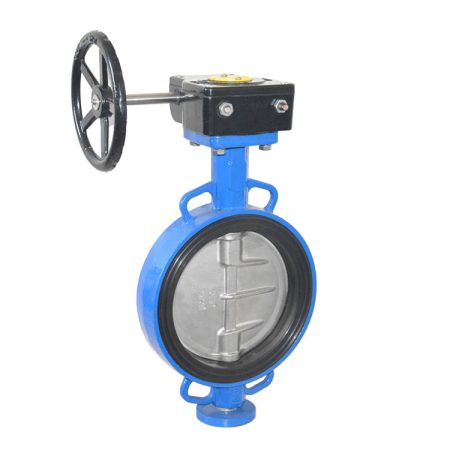
Advantages of Using Wafer Style Butterfly Valves
Wafer style butterfly valves offer several advantages that make them a popular choice across various industries. One of the primary benefits is their compact and lightweight design. Due to their wafer-thin construction, these valves require less space compared to other types of valves, making them ideal for applications where space is at a premium. This also makes them easier and less expensive to install, as they do not require extensive support structures. Another significant advantage is their cost-effectiveness. Not only are wafer style butterfly valves generally less expensive to purchase, but they also have lower maintenance costs due to their simple design with fewer moving parts. This simplicity also leads to reliable and efficient operation, with the ability to quickly open or close to control the flow of fluids. Furthermore, they offer excellent flow control capabilities, with the ability to handle both low and high flow rates effectively. The tight seal provided by these valves also ensures minimal leakage, enhancing operational efficiency. Additionally, they can be made from a variety of materials, making them suitable for different applications, whether it’s handling corrosive chemicals, high-temperature steam, or food products. Lastly, their durability and long lifespan mean that once installed, they can provide reliable service for many years, contributing to their overall cost-effectiveness. With these advantages, it’s easy to see why wafer style butterfly valves are extensively used in various industrial applications.
Overview of the benefits of using wafer style butterfly valves over other types of valves.
Wafer style butterfly valves offer several benefits over other types of valves, making them a preferred choice for many applications. One of the key advantages is their compact and lightweight design. Unlike other valve types that can be bulky and heavy, wafer style butterfly valves require less space, making them ideal for installations where space constraints exist. Moreover, their lightweight nature reduces the need for extensive support structures, simplifying installation and reducing costs. Another benefit is their cost-effectiveness. These valves are generally less expensive to purchase and maintain due to their simple design with fewer moving parts. They also offer quick and efficient operation, with the ability to open and close rapidly, providing superior flow control. The tight seal they provide ensures minimal leakage, enhancing operational efficiency. Furthermore, wafer style butterfly valves can handle a wide range of materials and operating conditions. They can be made from a variety of materials, allowing them to be used in different environments, whether it’s handling corrosive chemicals or high-temperature fluids. Lastly, their durability and long lifespan contribute to their overall value, providing reliable service for years. With these benefits, wafer style butterfly valves often present a more advantageous solution compared to other valve types.
Discussion on the cost-effectiveness, durability, and efficiency of these valves.
Wafer style butterfly valves are renowned for their cost-effectiveness, durability, and efficiency. In terms of cost-effectiveness, these valves have a simple design with fewer moving parts, which not only reduces the initial purchase cost but also minimizes maintenance costs. The compact and lightweight nature of these valves also means that they require less support structure, further reducing installation costs. Their durability is another significant advantage. Made from robust materials, these valves can withstand a wide range of conditions, whether it’s corrosive chemicals or high temperatures, ensuring a long lifespan and providing excellent value for money. In addition to being cost-effective and durable, wafer style butterfly valves are highly efficient. They provide quick and efficient operation, with the ability to rapidly open or close, allowing for precise flow control. The tight seal they offer ensures minimal leakage, contributing to operational efficiency. Moreover, their ability to handle different flow rates effectively makes them suitable for various applications, enhancing their versatility and efficiency. Therefore, the combination of cost-effectiveness, durability, and efficiency makes wafer style butterfly valves an optimal choice for many industrial applications.
Conclusion
In conclusion, wafer style butterfly valves are a critical component in many industrial applications due to their unique design, versatile functionality, and wide-ranging applications. Their compact and lightweight design allows them to fit into spaces where other types of valves might not be suitable, making them a practical solution for a variety of installations. They offer a simple yet effective mechanism for controlling the flow of fluids, with the ability to quickly open or close, providing excellent flow control capabilities.
These valves are also known for their cost-effectiveness. The initial purchase cost is generally lower compared to other valve types due to their simple design. Moreover, the maintenance costs are also minimized as there are fewer moving parts involved, reducing the likelihood of breakdowns and need for replacements. Their easy installation, requiring less support structure, further adds to the cost savings.
Wafer style butterfly valves are also highly durable, capable of withstanding a wide range of operating conditions. They can handle corrosive chemicals, high-temperature fluids, and even food-grade materials, making them a versatile choice for various industries. The robust construction of these valves ensures a long service life, providing excellent value for money.
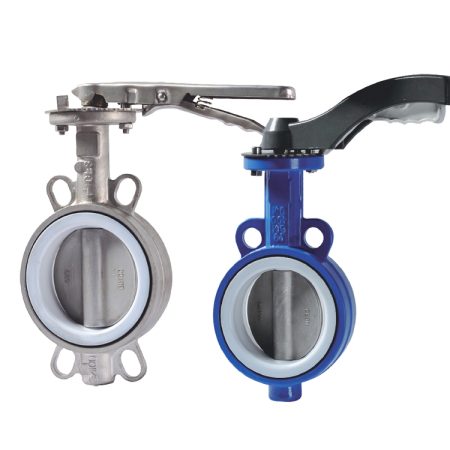
The efficiency of these valves is another notable attribute. The tight seal they provide minimizes leakage, enhancing operational efficiency. Furthermore, their ability to handle different flow rates effectively makes them suitable for a variety of applications, from water treatment plants to oil and gas pipelines, chemical processing facilities, and food and beverage processing units.
In essence, wafer style butterfly valves are a testament to how simplicity and efficiency can go hand in hand in valve design. Whether it’s their cost-effectiveness, durability, or efficiency, these valves tick all the boxes when it comes to meeting the diverse needs of various industries. So, the next time you come across a wafer style butterfly valve, you’ll know just how important this compact piece of equipment is in ensuring smooth and efficient operations across a myriad of industrial applications.


